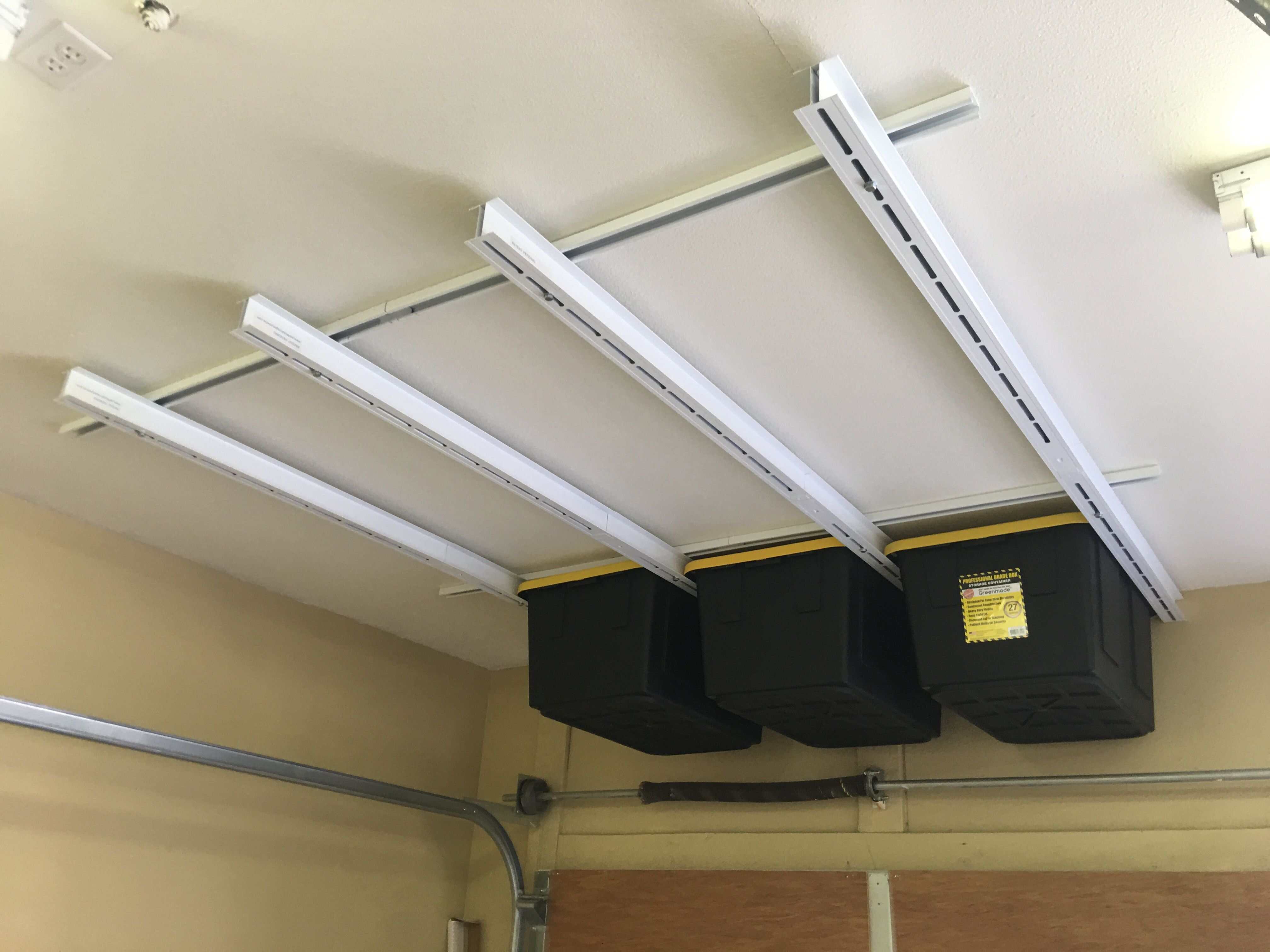

Articles
How To Store Totes
Modified: October 28, 2024
Learn the best practices for storing articles and totes efficiently and effectively. Find out how to maximize your storage space and keep your items organized.
(Many of the links in this article redirect to a specific reviewed product. Your purchase of these products through affiliate links helps to generate commission for Storables.com, at no extra cost. Learn more)
Introduction
When it comes to keeping our belongings organized and safe, storage totes are a popular choice. These versatile containers provide a convenient solution for storing and protecting a wide range of items, from seasonal clothing and holiday decorations to sports equipment and documents. However, it’s not enough to simply toss your belongings into a tote and forget about them. To ensure that your items remain in excellent condition during storage, it’s important to follow a few key steps.
In this article, we will guide you through the process of properly storing your totes. From selecting the right storage space to organizing and protecting your items, we will provide you with valuable tips and techniques to maximize the efficiency and durability of your storage solution.
By implementing these strategies, you can enjoy the peace of mind that comes with knowing your belongings are safely stored and easily accessible whenever you need them. So let’s dive in and discover how to store totes like a pro!
Key Takeaways:
- Properly storing totes involves choosing the right space, preparing items, organizing, and securing to ensure longevity and accessibility. Attention to detail and proactive maintenance are key for successful storage.
- Long-term storage requires durable totes, regular checks, proper ventilation, and protection from hazards. These measures ensure the preservation and safety of belongings over extended periods.
Read more: How To Store Tote Bags
Choosing the Right Storage Space
One of the first considerations when storing totes is selecting the right storage space. The ideal storage area should be clean, dry, and free from extreme temperatures. This will help prevent any damage to your belongings, such as mold, mildew, or warping.
If you have a basement or garage, these can be excellent options for storing your totes. However, make sure to assess the conditions of these spaces first. Basements should be free from leaks or excess moisture, while garages should be properly insulated to protect against extreme temperature fluctuations.
In the absence of a basement or garage, consider investing in a climate-controlled storage unit. These units are designed to maintain a consistent temperature and humidity level, providing an optimal environment for storing your totes and their contents. Climate control is especially important for delicate items like photographs, electronics, or wooden furniture.
Before committing to a storage space, it’s crucial to measure the available area and estimate the number of totes you need to store. This will help you determine whether the space is sufficient and how you can maximize the use of the area. Keep in mind that you may need to leave some room for walking or accessing specific totes.
Additionally, consider the accessibility of the storage space. It’s best to choose a location that allows for easy retrieval and maintenance of your totes. If storing multiple totes, you may want to implement a labeling or inventory system to quickly locate specific items without having to rummage through all of them.
By carefully choosing the right storage space, you can ensure the longevity and condition of your totes and their contents. This will make it easier to keep your belongings organized and have them readily available whenever you need them.
Preparing Totes for Storage
Before placing your items in the totes, it’s important to properly prepare them for storage. This will help protect your belongings and maintain their condition throughout the storage period.
The first step in preparing your totes is to make sure they are clean and dry. Give them a thorough wipe down with a damp cloth to remove any dust, dirt, or grime. If the totes have any sticky residue or stains, use a mild detergent or cleaning solution to spot clean them. Ensure that the totes are completely dry before proceeding to the next step, as any moisture can lead to mold or mildew growth.
Once the totes are clean and dry, consider lining the bottom with a layer of protection. This can be done with a plastic or cloth drop cloth, old blankets, or even bubble wrap. This extra layer will help cushion your items and provide a barrier against any moisture that may accumulate on the storage surface.
Another important step in preparing your totes is to consider the fragility of your items. If you’re storing delicate or breakable items, it’s essential to provide additional protection. Wrap fragile items in bubble wrap or packing paper and place them in smaller, padded containers within the tote. This will minimize the risk of damage during storage and transportation.
For clothing or fabric items, consider using acid-free tissue paper or garment bags to prevent any discoloration or damage. Avoid using plastic bags for clothing storage, as they can trap moisture and lead to musty odors or mildew growth.
Additionally, if you’re storing items that are sensitive to temperature or humidity, such as electronics or artwork, consider adding moisture-absorbing packs or silica gel packets to the tote. These will help control the moisture levels inside the tote and protect your items from any potential damage.
By taking the time to properly prepare your totes for storage, you can ensure that your belongings remain in excellent condition and are safeguarded against any potential risks. This careful preparation will provide you with peace of mind knowing that your items are well-protected throughout the storage period.
Proper Cleaning and Organization
When it comes to storing totes, proper cleaning and organization play a crucial role in maintaining the integrity and longevity of your items. Follow these steps to ensure that your totes and their contents remain in excellent condition:
Clean Before Storage: Clean all items that will be placed in the totes. This includes clothing, dishes, electronics, and any other items. Remove any dirt, dust, or food particles, and make sure they are completely dry before storing. This will prevent the growth of mold or mildew and keep your belongings fresh.
Sort and Categorize: Before placing items in the totes, sort and categorize them based on their type or usage. This will make it easier to locate specific items later on. Consider grouping similar items together, such as seasonal clothing, holiday decorations, or sports equipment.
Use Dividers or Compartments: Within each tote, consider using dividers or compartments to further organize your belongings. This can be achieved using plastic bins or even repurposing shoeboxes. Dividers help prevent items from shifting during storage and make it easier to access specific items without disrupting the entire contents of the tote.
Avoid Overstuffing: While it may be tempting to fit as much as possible into each tote, avoid overstuffing them. Overfilled totes can lead to damage to your items and make it difficult to access specific belongings when needed. Leave some room for light ventilation and ease of handling during storage.
Consider Optimal Weight Distribution: When distributing weight in the totes, place heavier items at the bottom and lighter items on top. This will help maintain stability and prevent any crushing or damage to more fragile belongings. Remember to pack items tightly, but without exerting too much force, to avoid unnecessary pressure.
Document and Inventory: Keep a list or inventory of the items stored in each tote. This can be done through a physical written list or by taking photos of the stored items. This will help you keep track of your belongings and make it easier to locate specific items without having to go through every tote.
Regularly Maintain and Refresh: Periodically check on your stored totes and their contents. This can include visually inspecting for any signs of damage, replenishing desiccant packs if necessary, and rearranging items if needed. Regular maintenance will help prolong the life of your totes and ensure the continued protection of your belongings.
By following these cleaning and organization tips, you can ensure that your totes remain tidy, well-organized, and easy to navigate. This will save you time and effort when retrieving items and contribute to a more efficient and enjoyable storage experience.
Stacking and Shelving Methods
When it comes to storing totes, utilizing proper stacking and shelving methods can help maximize space, improve accessibility, and ensure the stability and safety of your belongings. Follow these techniques to make the most out of your storage area:
Stacking Totes: When stacking totes, it’s important to create a stable and balanced structure. Start by placing the heaviest and sturdiest totes at the bottom. This provides a solid foundation for the stack. Avoid stacking too high if the totes are heavy or if you’re unable to handle the weight comfortably. Remember to leave enough space between the top of the stack and the ceiling to avoid damaging the contents.
Interlocking Stacking: To further enhance stability, consider interlocking the totes when stacking them. Many totes are designed with grooves or lids that allow them to interlock securely. This prevents the totes from sliding or toppling over during storage. If your totes don’t have interlocking features, you can use bungee cords or straps to secure the stack together.
Shelving Units: If you have the space and budget, investing in shelving units can greatly optimize your storage area. Choose sturdy, adjustable shelves that can accommodate the size and weight of your totes. Place the heaviest totes on the lower shelves and gradually work your way up with lighter totes. This creates a stable and organized structure that is easy to access and maintain.
Clear Plastic Bins: Consider using clear plastic bins for stacking and shelving. Clear bins allow you to easily identify the contents of each tote without having to open them. This saves time and effort when searching for specific items. Label the bins for added convenience and maintain a clear inventory of your stored belongings.
Utilize Vertical Space: Maximize every inch of available space by utilizing the vertical area. This can be achieved by stacking totes all the way to the ceiling or by installing overhead shelves or racks. Make use of tall shelves or stackable storage systems specifically designed for vertical storage. This is particularly useful for storing lightweight and infrequently used items.
Securing Totes: To prevent the sliding or tipping of totes, consider using non-slip mats or grip liners on the shelves. These provide added traction and stability, ensuring that the totes remain in place. If possible, anchor the shelves to the wall for extra security, especially in earthquake-prone areas.
By implementing these stacking and shelving methods, you can optimize your storage area, create a well-organized system, and have easy access to your belongings. These techniques will maximize the efficiency of your storage space and provide a secure and tidy environment for your totes.
When storing totes, make sure to clean and dry them thoroughly before stacking to prevent mold and mildew. Store them in a cool, dry place to maintain their condition.
Read more: How To Organize Tote Bags
Labeling and Inventory Systems
Labeling and implementing an inventory system for your stored totes is crucial for efficient organization and easy retrieval of items. Follow these tips to ensure that you can quickly locate specific belongings:
Clear and Consistent Labels: Label each tote clearly and prominently. Use a waterproof and permanent marker or label maker to create legible, easy-to-read labels. Include a brief description of the items inside the tote or use color-coded labels to indicate different categories. Maintaining consistent labeling throughout your storage system will make it easier to identify and locate specific items.
Inventory List: Keep an inventory list of all the totes and their contents. This can be a handwritten or digital list that includes a detailed description of what is stored in each tote. Alternatively, you can take photos of the contents and create a visual inventory. Update the inventory list regularly to reflect any changes or additions to the stored items.
Barcode or QR Code System: For a more advanced inventory system, consider using barcode or QR code labels. Assign a unique code to each tote and scan it to access detailed information about the contents. This method is especially useful for larger storage facilities or for those who prefer a digital approach to inventory management.
Location Tracking: If you have multiple storage areas or sections within a storage facility, record the location of each tote in your inventory system. This will help you quickly identify where each tote is located, saving time and effort when retrieving items.
Inventory Software: Consider using inventory management software or apps to streamline the process. These tools allow you to create and manage an inventory database, track the location of items, and generate reports. Some popular options include Evernote, Google Sheets, or specialized inventory management apps.
Additional Labeling Tips: In addition to labeling the outside of the totes, consider labeling the inside as well. This is particularly helpful when the contents of the tote change or when multiple items are stored inside a single tote. It eliminates the need to search through the entire tote to find a specific item.
Label Placement: Consistently place labels on the same side or end of the tote to ensure they can be easily seen. Avoid covering the label with tape or other materials that may obscure its visibility. If using stackable totes, place the label in a position where it’s still visible when the totes are stacked on top of each other.
By implementing a labeling and inventory system, you can easily locate and retrieve items from your stored totes. Whether you prefer a simple handwritten inventory or a digital tracking system, having a clear record of what’s inside each tote will save you time and make your storage space more efficient.
Securing and Protecting Totes
Ensuring the security and protection of your totes and their contents is essential to preserving the integrity and longevity of your belongings. Here are some tips to help you secure and protect your totes during storage:
Lockable Totes: If you have valuable or sensitive items stored in your totes, consider investing in lockable totes. These totes come with built-in locking mechanisms or can be secured with padlocks. Lockable totes provide an extra layer of security and prevent unauthorized access to your belongings.
Surveillance and Security Measures: If you’re storing your totes in a shared or public storage facility, opt for one that has adequate security measures in place. Look for facilities with surveillance cameras, well-lit areas, and secure access control. This will minimize the risk of theft or damage to your totes.
Pest Prevention: To protect your totes from pests such as rodents or insects, take preventative measures. Seal any cracks or openings in the storage area to prevent pests from entering. Avoid storing food items in your totes, as they can attract pests. Consider placing pest repellents such as mothballs or cedar chips near your totes to deter pests.
Climate Control: If your storage area is prone to temperature and humidity fluctuations, consider using climate-controlled totes or adding desiccant packs inside the totes. Climate control helps prevent the growth of mold, mildew, or moisture-related damage to your belongings.
Protection from Water Damage: Take precautions to protect your totes from potential water damage. Choose totes with tight-fitting lids to keep out moisture. If storing in a location prone to leaks or water intrusion, place your totes on pallets or use plastic covers to elevate them off the ground.
Fire Safety: In case of a fire, it’s crucial to protect your totes and their contents. Avoid storing flammable materials inside the totes. If possible, choose fire-resistant totes or consider using fireproof storage bags for extra protection. Additionally, make sure your storage area has proper fire prevention measures in place, such as fire extinguishers and smoke detectors.
Insurance Coverage: Consider obtaining insurance coverage for your stored totes and their contents. This provides financial protection in the event of theft, damage, or unforeseen circumstances. Check with your insurance provider to see if your belongings are covered under your existing policies or if you need additional storage insurance.
Maintain Documentation: Keep a record of the value and contents of your stored totes. This can be in the form of receipts, photographs, or a detailed inventory list. In the event of loss or damage, having proper documentation will be necessary for insurance claims or replacement purposes.
By taking these measures to secure and protect your totes, you can have peace of mind knowing that your belongings are safe and well-preserved. These steps will help ensure the longevity and condition of your totes and their contents during the storage period.
Tips for Long-Term Storage
Long-term storage requires extra care to ensure the preservation of your totes and their contents over an extended period. Follow these tips to maintain the condition of your belongings during long-term storage:
Choose Durable Totes: Invest in high-quality, durable totes that can withstand the test of time. Look for totes made from sturdy materials, such as heavy-duty plastic or reinforced fabric. These totes are less likely to deteriorate or break down over extended periods of storage.
Avoid Extreme Temperatures: Extreme temperatures can cause damage to your stored items. Avoid storing totes in areas that experience excessive heat or cold, such as attics or unheated garages. Opt for climate-controlled storage units, basements, or temperature-regulated areas to minimize the impact of temperature fluctuations.
Regularly Check and Rotate: Periodically check on your stored totes and their contents, even during long-term storage. This allows you to inspect for any signs of damage, pests, or other issues. Consider rotating the items in your totes to prevent prolonged pressure on specific spots and ensure even use of stored belongings.
Refrain from Overfilling: Avoid overfilling totes during long-term storage. Overfilled totes can put excess strain on the tote and its contents, leading to damage or breakage. Leave some room within each tote to allow for air circulation and ease of handling.
Maintain Proper Ventilation: Adequate ventilation is crucial for long-term storage. Avoid sealing totes with airtight materials as it can lead to moisture buildup and potential damage to your belongings. If storing in an enclosed space, consider using breathable fabric covers or leaving some openings to promote airflow.
Periodic Cleaning: Regularly clean your totes and the surrounding storage area. Dust and debris can accumulate over time, potentially damaging stored items. Wipe down the totes, vacuum or sweep the storage space, and keep it free from any potential hazards or contaminants.
Keep Away from Direct Sunlight: Prolonged exposure to direct sunlight can result in fading or discoloration of items stored in totes. Store your totes in areas away from windows or protect them with curtains or blinds to minimize exposure to harsh sunlight.
Avoid Hazardous Materials: Do not store any materials that are hazardous, flammable, or perishable in your totes. These items can pose a risk to other stored belongings and compromise their safety. Properly dispose of any hazardous materials following local regulations.
Regular Pest Control: Implement a regular pest control routine to prevent infestations in your storage area. Use insect repellents or traps near your totes and periodically inspect for signs of pests. Taking preventive measures will help safeguard your belongings against damage caused by pests.
Update Insurance Coverage: If you’re storing valuable or high-risk items for an extended period, consider updating your insurance coverage. Double-check your policy to ensure adequate coverage for long-term storage and make adjustments if necessary.
By following these tips for long-term storage, you can ensure the longevity and safety of your totes and their contents. With proper precautions in place, you can have peace of mind knowing that your belongings are well-preserved and will remain in excellent condition until you need them again.
Conclusion
Properly storing your totes is not just about organizing your belongings; it’s about preserving their condition and ensuring their longevity. By following the tips and techniques outlined in this article, you can maximize the efficiency and effectiveness of your storage solution.
From choosing the right storage space to preparing your totes for storage, implementing proper cleaning and organization methods, and utilizing stacking, shelving, labeling, and inventory systems, each step plays a vital role in maintaining the integrity of your stored items.
Securing and protecting your totes is equally important. By taking steps to prevent damage from water, pests, extreme temperatures, and other factors, you can safeguard your belongings and maintain their quality over extended periods of storage.
Lastly, when it comes to long-term storage, consider investing in durable totes, regularly checking and rotating stored items, ensuring proper ventilation, and keeping away from direct sunlight or hazardous materials. These measures will contribute to the continued preservation of your belongings.
Remember, the key to successful storage is organization, attention to detail, and proactive maintenance. By implementing these strategies, you can have peace of mind knowing that your totes and their contents are safe, secure, and easily accessible whenever you need them.
So go ahead, put these tips into practice and transform your storage experience. Whether you’re storing seasonal items, sentimental belongings, or important documents, proper storage techniques will help you keep everything organized, protected, and in excellent condition.
Happy storing!
Frequently Asked Questions about How To Store Totes
Was this page helpful?
At Storables.com, we guarantee accurate and reliable information. Our content, validated by Expert Board Contributors, is crafted following stringent Editorial Policies. We're committed to providing you with well-researched, expert-backed insights for all your informational needs.
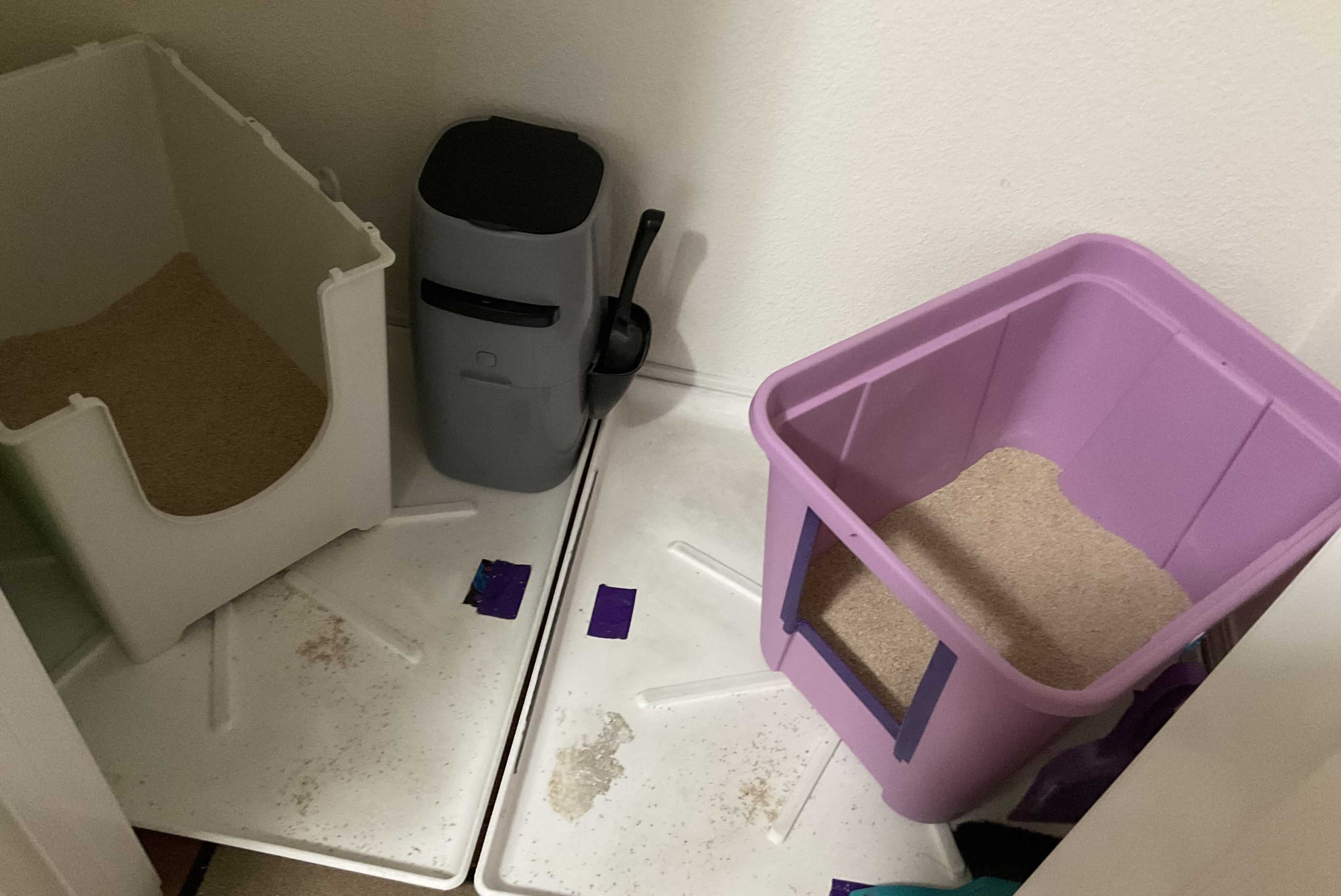
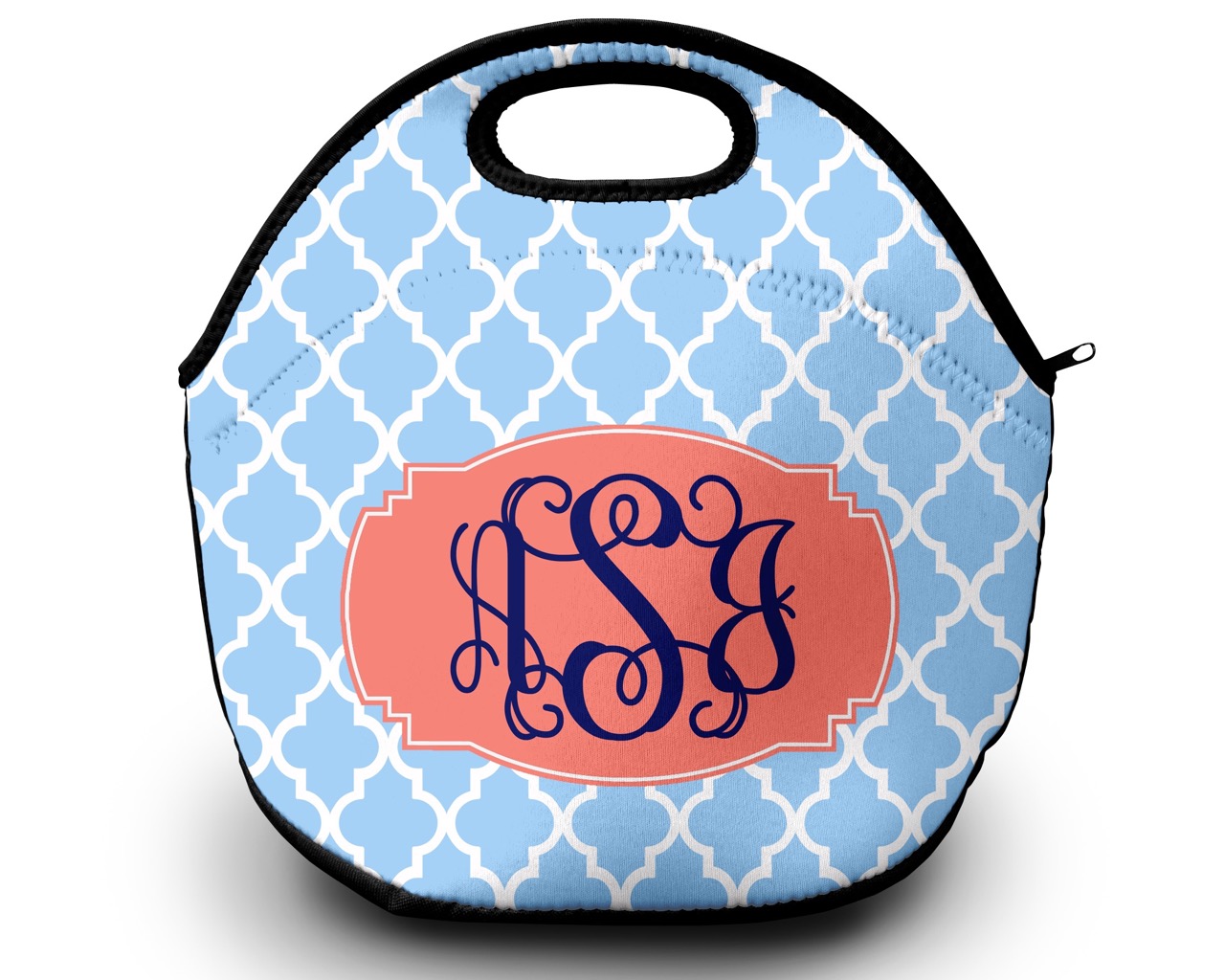
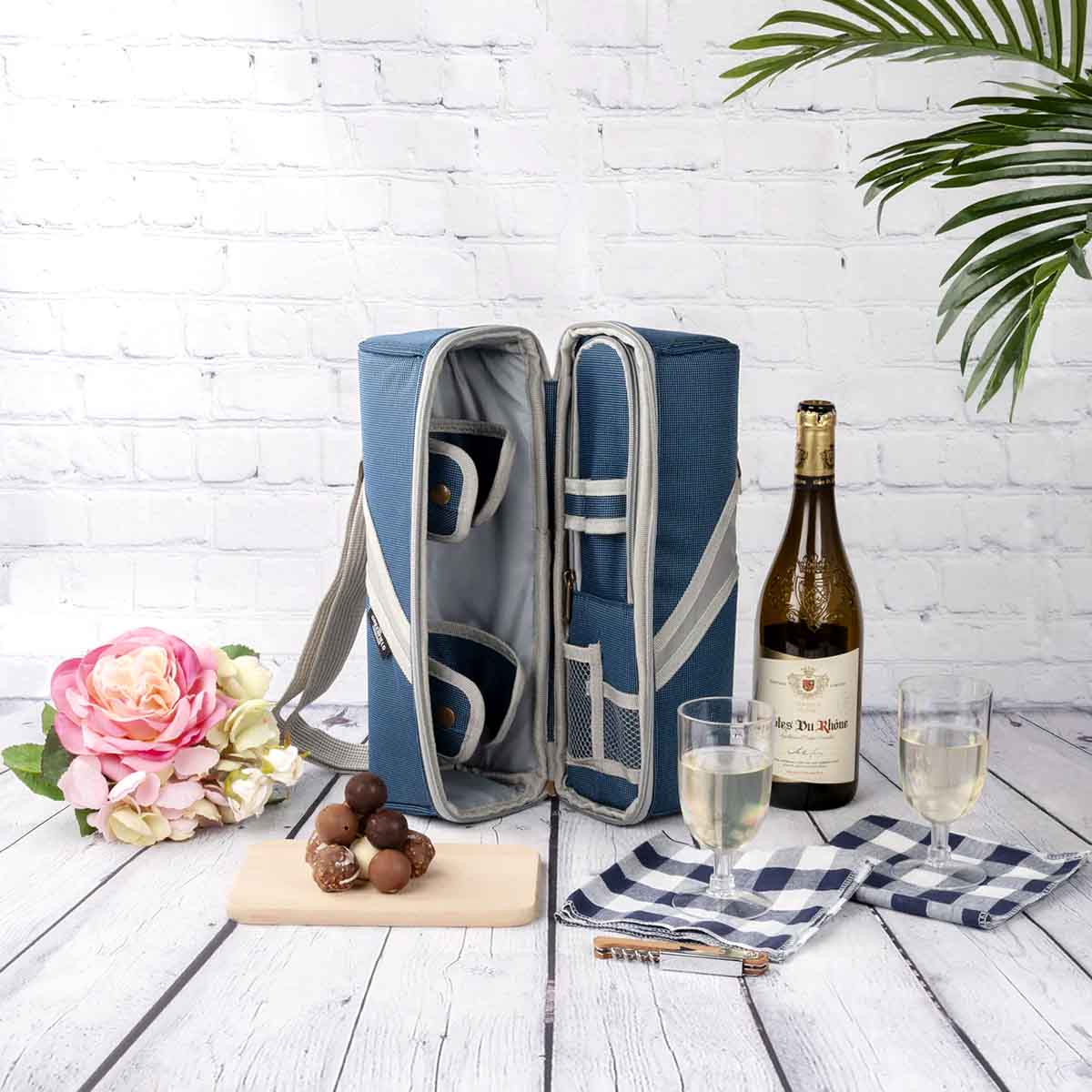
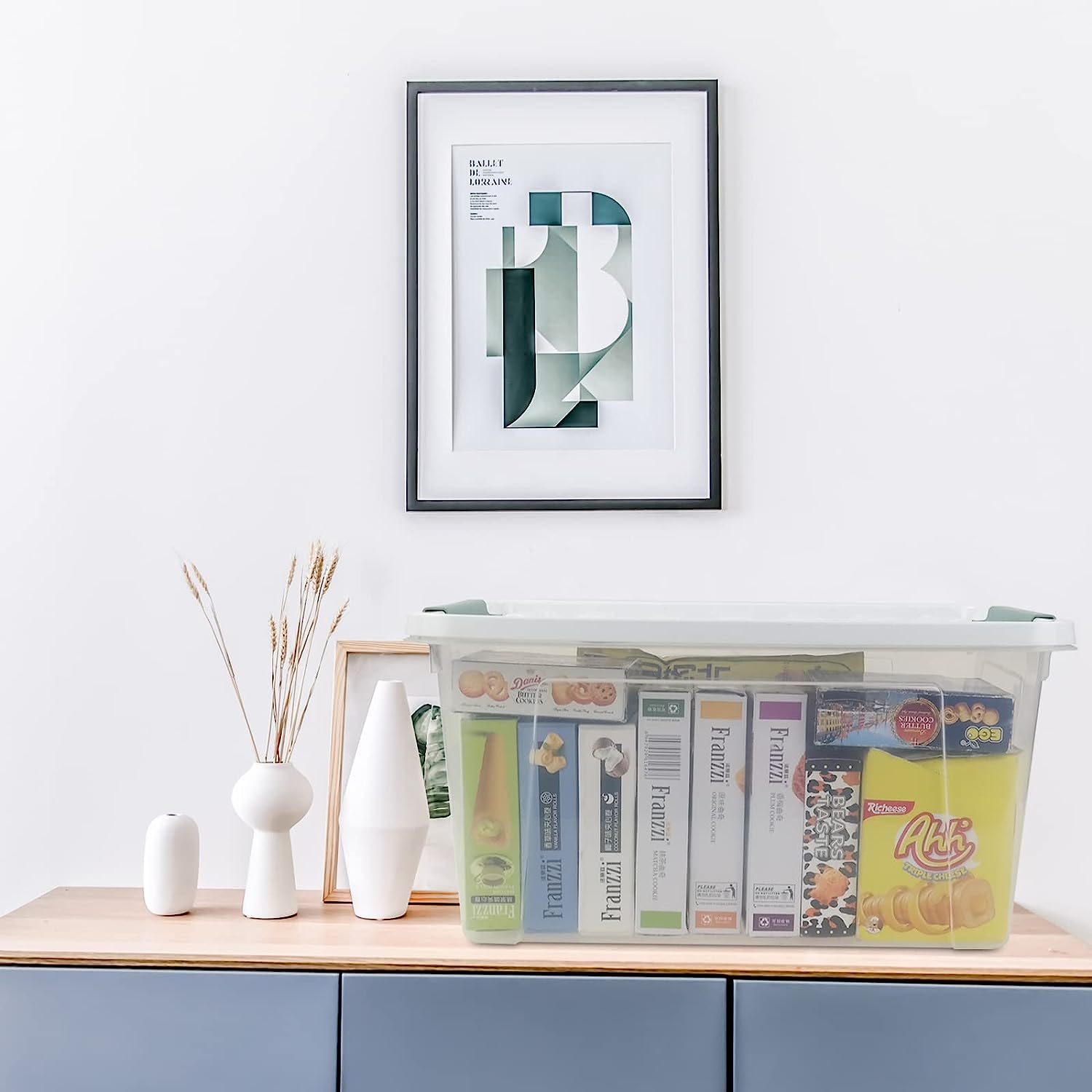
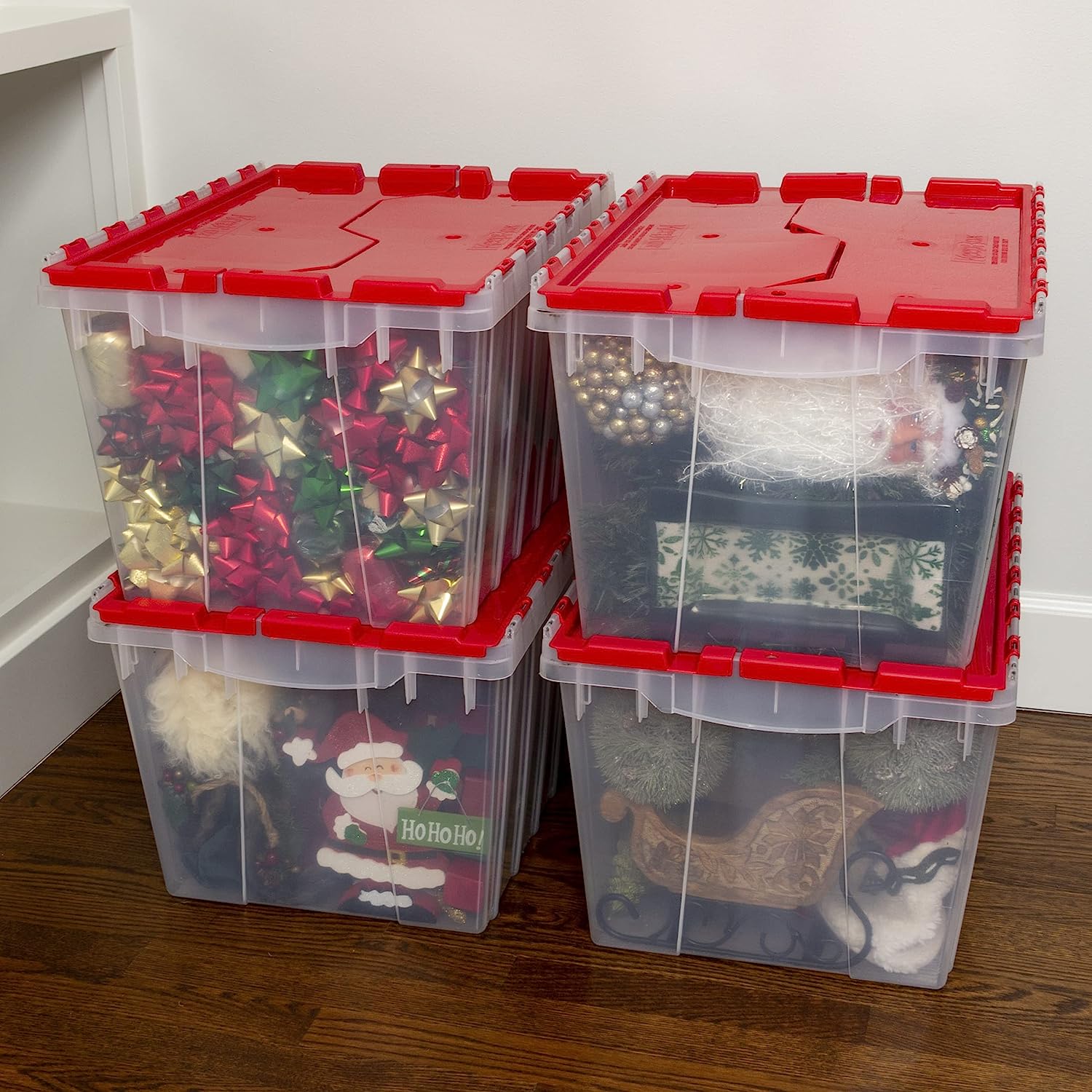
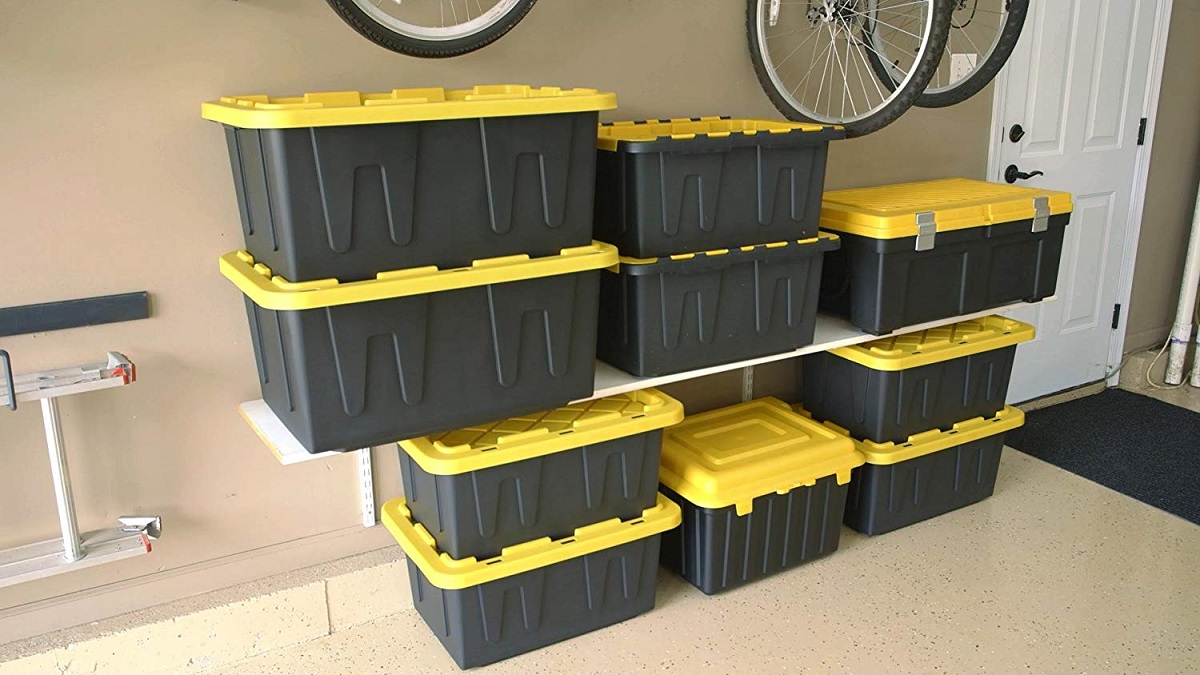









0 thoughts on “How To Store Totes”